Cycling duality and synthesis
Tam Ochiai: ‘Spies are only revealed when they get caught’
Posted: Fri Jun 25 2010



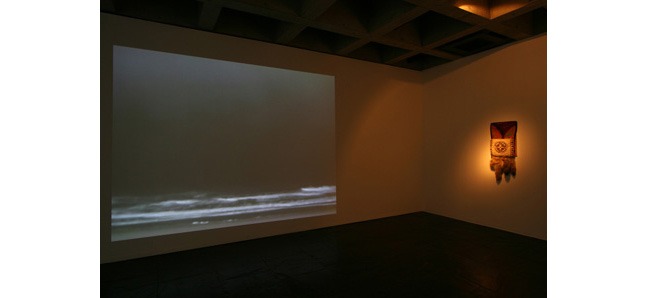
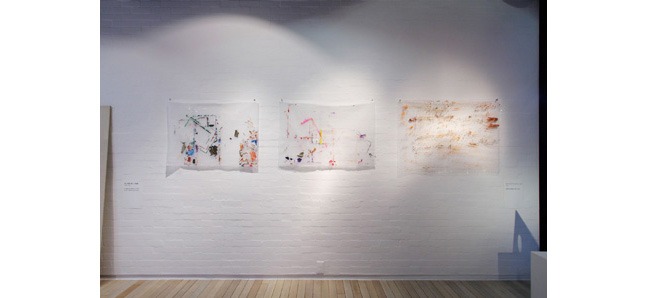
Contemporary artist Tam Ochiai was born in 1967. After graduating from university he travelled to America where he continues to this day to make art. Exhibitions of his work in Japan include an exhibition at the Tomio Koyama Gallery in Kiyosumi Shirakawa and ‘The Door into Summer: The Age of Micropop’ held at the Art Tower Mito in 2006. These days, Ochiai is showing his work more and more internationally. He recently slipped back into Japan to hold an exhibition of his new work at the Watari-Um (The Watari Museum of Contemporary Art). When I read Ochiai’s artists statement for this exhibition, this passage jumped out: ‘If you go all the way south you'll get to the South Pale, and the next moment you'll be heading north. Going south is the same thing as going north,’ and a story about translucent rainbows sprung to mind.
Writer, Michel Pastoureau, in his book ‘Europa no shikisai’ (‘Dictionnaire des couleurs de notre temps’) (Papyrus Publishing) recounts the following anecdote. It’s an anecdote about a paint company in the West in an age of mass production. The story goes that the company would place a label with the paint colour on the can of paint they produced. For red paint the sticker was red, for green paint the colour was green, and so on. However, one day they developed a new product: a clear paint. The company couldn’t put a clear label on the paint can, so after much thought they decided on a picture of a rainbow. This linking of nothing and everything as having the same meaning, is like in mathematics where infinity and minus infinity is the same thing.
Ochiai’s artworks are similarly hard to put your finger on. When you try to, they get further away. Then, just when you think they’ve gone – they’re back, wanting to get close to you again. In this way, his work sometimes appears to be like a cat. For Ochai, ‘A is not necessarily A’: it sways between A and non-A. There is no point in questioning the dualism of whether it’s A or non-A; through this teetering between A and non-A, Ochiai’s work finds itself in a manoeuvrable position.
Take his drawings as an example. In the series of works ‘Kenchiku, chokoku, mata wa nani ka’ (‘architecture, sculpture and something’) he draws historical buildings that once existed or still exist. In each drawing he gently disassembles the actual historical meaning of each building. Then by displaying the drawing alongside a picture of a building from a different context, and in no logical order, he opens up the potential for ‘some new stories’, according to his artist’s statement. However, he doesn’t say what some new stories are – probably because he doesn’t know either (or because there is no point defining it). Rather, there is meaning in trying to open the door to something new. In his work, the ‘wavering’ ‘between pure visual stimulation and the threads of an unknown story’ is being carved out, as Midori Matsui’s ‘The Age of Micropop: The New Generation of Japanese Artists’ put it.
This exhibition refines this refusal to be pinned down to a meaning or a realm. In the video piece, titled ‘Chikyujyo de ichiban takai tokoro ni manhatttan de iku bideo’ (‘hot to get to the top of mt. everest in manhattan’), each step Ochiai takes as he climbs the spiral staircase has both an abstract and real possibility of taking him to the ‘highest place’. In ‘Biniru peintingu’(‘vinyl painting’), in which he painted on a sheet of clear plastic using acrylic paints, whatever he intentionally drew has turned into something completely different due to the plastic not taking to the acrylic. A door opening to countless possibilities. A direct connection between one action and infinity. A translucent rainbow.
If making something that is not A is praised as originality by the art critics, then 'the art' may end up being things like, 'Art is like finding a star that you had never known' and 'so free and yet so impossible to find', both notions found in his artist's statement. However, if that is all the more unsettling, we can say that it is thanks to this action of stepping back from A (or even just thinking about it) that new representations are born. This is because at that moment the artwork allows us access to the existence all the non-As.
We live in an era when it’s difficult for there to be a mainstream, and so the antithesis of the mainstream becomes void and all poseurs and those on the outer fringe become one, giving rise to ‘a pan-current’ (what Tsunehiro Uno calls ‘an island universe’). To that end it makes sense why people don’t employ commercial marketing, why we don't always have much of a sense of belonging to anything and why it's pointless even asking the question ‘What is art?’ Ochiai knows this all too well, but even so, as someone who makes serious art and light hearted and playful art, he possesses a readiness and self-awareness to test what he can do. This is most certainly why his work is so well received in this era.
Tam Ochiai: ‘Spies are only revealed when they get caught’
Location: Watari-Um Museum of Contemporary Art (Full details & map)
Date: Until Sun Aug 8
Website: www.watarium.co.jp/exhibition/1005tamu/
Tweets
- About Us |
- Work for Time Out |
- Send us info |
- Advertising |
- Mobile edition |
- Terms & Conditions |
- Privacy policy |
- Contact Us
Copyright © 2014 Time Out Tokyo










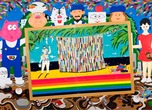
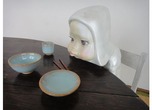
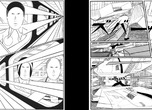

Add your comment